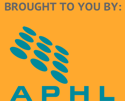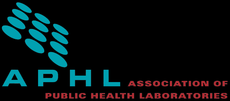Videos
THE FLU
Tracking Flu
Flu in “Shift”
Flu Attack! How a Virus Invades Your body
- In this short video (14:22), Khan Academy explains influenza surveillance and how the internet can be used to track the spread of the flu.
- https://www.khanacademy.org/science/health-and-medicine/infectious-diseases/influenza/v/flu-surveillance
Flu in “Shift”
- In this short video (7:42), Khan Academy explains genetic shift, the process of how new influenza viruses are formed. Public health laboratory scientists maintain influenza surveillance programs so they are able to detect and respond when a genetic shift has occurred.
- https://www.khanacademy.org/science/health-and-medicine/infectious-diseases/influenza/v/genetic-shift-in-flu
Flu Attack! How a Virus Invades Your body
- This short video (3:38) from National Public Radio describes how a sneeze droplet from a person infected with influenza can infect another person. Teachers may want to highlight the importance of sneezing into elbows or tissues and hand washing after showing this video.
- http://www.npr.org/blogs/krulwich/2011/06/01/114075029/flu-attack-how-a-virus-invades-your-body
IT'S GENETICS, BABY!
“The Twisting Tale of DNA” - Judith Hauck (TEDEd)
Genetics Rap
Newborn Screening Process
Newborn Screening Virtual Lab Tour Video
Bubble Boy Disease
- This video explains the basic science of DNA gene sequencing and how environmental factors have a role in gene mutations.
- http://ed.ted.com/lessons/the-twisting-tale-of-dna-judith-hauck
Genetics Rap
- This is a short video to help teachers engage students on the topic of genes.
- http://www.teachertube.com/video/genetics-rap-195326
Newborn Screening Process
- This is a video (16:50) that shows the entire newborn screening process beginning with the Texas Public Health State Laboratory, treatment at Mt. Sinai, NY and examples of small babies with various disorders, including a missed case from Virginia and disorders tested by different states.
- https://www.youtube.com/watch?v=uu2C2oS0YtI
Newborn Screening Virtual Lab Tour Video
- This is a short virtual tour of the Newborn Screening Ontario laboratory that covers the testing steps from sample collection to testing by public health laboratory scientists.
- https://www.youtube.com/watch?v=p0dMpv9WUhk&feature=youtu.be
Bubble Boy Disease
- Severe combined immunodeficiency (SCID) disease, one of the disorders screened by public health laboratory scientists, is also called the Bubble Boy Disease. These short videos provide a glimpse into the disease, diagnosis, treatment, hereditary traits and the life of the original Bubble Boy.
- https://www.youtube.com/watch?v=35MgqYuEQ5A
- https://www.youtube.com/watch?v=BgesL8cVgmI
- https://www.youtube.com/watch?v=4CFPdUAj41Y
EXPECT THE UNEXPECTED
Ebola Virus
What We Know and Don’t Know about Ebola - TEDEd
What You Need to Know About Ebola
Frontline: Ebola Outbreak - PBS Documentary Film With Worksheet
Disease Early Warning
- This is a short video that covers the geographical location, source, strains, transmission and symptoms of the Ebola virus.
- https://www.youtube.com/watch?v=x8xJ4V77Ufs&feature=player_embedded
What We Know and Don’t Know about Ebola - TEDEd
- This is a short (4:00) animated video that explains the Ebola epidemic in Africa including location, source, strains, transmission, symptoms and environmental hazards that play a role in the deadly virus.
- http://ed.ted.com/lessons/what-we-know-and-don-t-know-about-ebola-alex-gendler
What You Need to Know About Ebola
- An engaging and informative (4:00) video clip from Sci-Show covering key topics such as the history of Ebola, how it is transmitted, identifying a specific species out of the five Ebola viruses, and comparing Ebola to other diseases.
- https://www.youtube.com/watch?v=TGyFhwdtCMk&feature=youtu.be
Frontline: Ebola Outbreak - PBS Documentary Film With Worksheet
- A 27-minute documentary film based in Sierra Leone, West Africa where Ebola has rampantly spread and contaminated many of its villages. This film shows surveillance teams search for infected victims and move them to hospitals for isolation and treatment.
- Documentary: http://www.pbs.org/wgbh/pages/frontline/ebola-outbreak/
- Video Worksheet: http://newshour-tc.pbs.org/newshour/extra/wp-content/uploads/sites/2/2014/09/Frontline-Ebola-Outbreak-video-worksheet-edited1.pdf
Disease Early Warning
- This is a short video (3:47) that explains how information technology can be used to provide early warning signs about disease outbreaks.
- https://www.youtube.com/watch?v=c0W2yFp1PSM
THE WORLD AROUND ME
Did You See That?
Forensic Files “Death by Poison: Sunday’s Wake”
- This is a short video (1:27) that explains the role that public health laboratory scientists play in the monitoring of environmental organic pollutants of fresh water sources.
- http://www.shl.uiowa.edu/edtrain/tools/playdidyouseethat.xml
Forensic Files “Death by Poison: Sunday’s Wake”
- After moving with her family from Sudan to the United States, a little girl becomes ill with flu-like symptoms and dies. The investigation reveals that the little girl died of extremely high levels of lead poisoning (21:38).
- https://www.youtube.com/watch?v=Q90O1kEbM-4
SUPERBUGS: ANTIBIOTIC RESISTANCE
Carbapenem-Resistant Enterobacteriaceae (CRE)
Nearly 180 People Exposed to Drug-Resistant Superbug Known as CRE
Attack of the Super Bugs
- According to the CDC, more than 9,000 healthcare-associated infections (HAIs) are caused by CRE each year. CRE are a family of germs that are difficult to treat because they have high levels of resistance to antibiotics and can be deadly. This Youtube video clip discusses the CRE superbug.
- https://www.youtube.com/watch?v=I7wS6qZ5FeE
Nearly 180 People Exposed to Drug-Resistant Superbug Known as CRE
- ABC News coverage of CRE likely transmitted to patients by contaminated medical scopes at UCLA’s Ronald Reagan Medical Center exposing 180 people.
- https://www.youtube.com/watch?v=2DwuQFPDKsc
Attack of the Super Bugs
- This is a short (10:00) SciShow video describing bacteria, the development of antibiotics, and the evolution of super bugs. While the presenter will certainly appeal to middle school students themselves, the content is more appropriate for the teacher to use as a resource.
- https://www.youtube.com/watch?v=a-apdGwBPz4
MEASLES, MUMPS, PERTUSSIS - OH MY!
ER Smallpox and ER Lockdown
- These short (2:45, 2:08) and exciting clips from the television series, ER, can be used to spark discussion about smallpox, eradicated diseases, and vaccines.
- https://www.youtube.com/watch?v=O3vWAFP2zIg
- https://www.youtube.com/watch?v=2jv5DHdH3sY
THERE'S WHAT IN MY FOOD?
How Our School Fought BAC
Foodborne Illness: What Problem?
Virginia's Laboratory Testing for Foodborne Illnesses
- This is a 20 minute video that accompanies the FightBAC Teacher’s Guide
- https://www.youtube.com/watch?v=HHtVoFRwzHE
Foodborne Illness: What Problem?
- This production is the first in a series of seven videos. It introduces novice outbreak investigation team members to the concept of foodborne illness and the current health and financial burden it has in the US. This video also offers a historical perspective on the changes that have occurred within the food industry and their effects on public health and food safety professionals today.
- https://www.youtube.com/watch?v=2QQvhFPZedM
Virginia's Laboratory Testing for Foodborne Illnesses
- WWBT Channel 12 takes a look at what is involved when detecting foodborne illnesses. Speaking with the Division of Consolidated Laboratory Services in the Department of General Services and with the Virginia Department of Health, this news story shows the lab testing that occurs, and why it can be so difficult to determine if an illness is foodborne.
- https://www.youtube.com/watch?v=5Guq1TAaTq8
Have questions or feedback? Contact us at [email protected].


